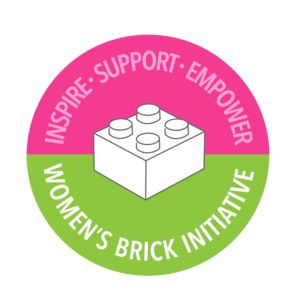Earlier this year, LEGO launched the “She Built That” campaign to challenge traditional gender views of building. The campaign included a reimagined RUN DMC track, brick plaques honoring female builders in London, creativity workshops, a browser game, and most recently, the TIME Girls of the Year list.
What began as what many saw as a surface-level marketing move is evolving into one of LEGO’s most meaningful campaigns in decades, shifting the narrative of how society views “girl builders.” I see “She Built That” as an extension of the “Rebuild the World” campaign, but with sharper focus: women and girls who, historically and even today, must fight for recognition as legitimate builders in the LEGO ecosystem. While earlier campaigns like Rebuild the World and Everyone is Awesome emphasized broad themes of diversity and inclusion, She Built That stands out for targeting a specific, historically excluded group.
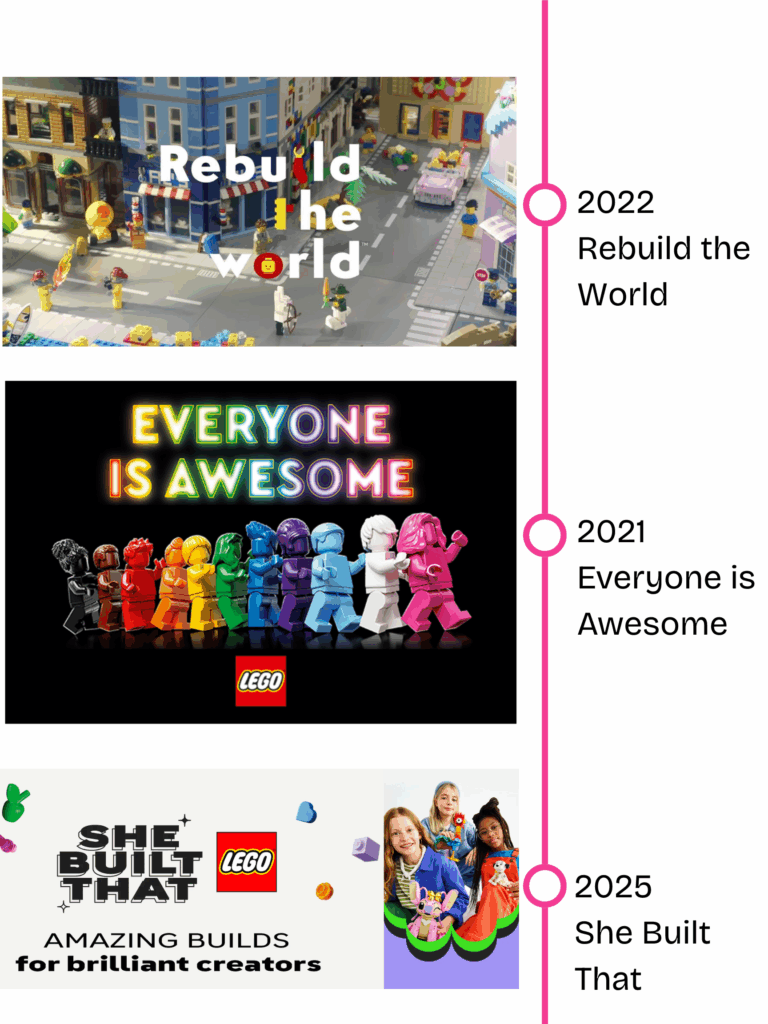
The importance of this campaign cannot be overstated. It’s an opportunity for LEGO to address the gaps and stereotypes that have long appeared in minifigures, advertisements, catalogues, product labels, and even design decisions: many of which are still painfully visible today. Countless articles already break down these inequities, but here’s one snapshot: a graph of gender gap in designers of LEGO’s BrickLink Designer Program.
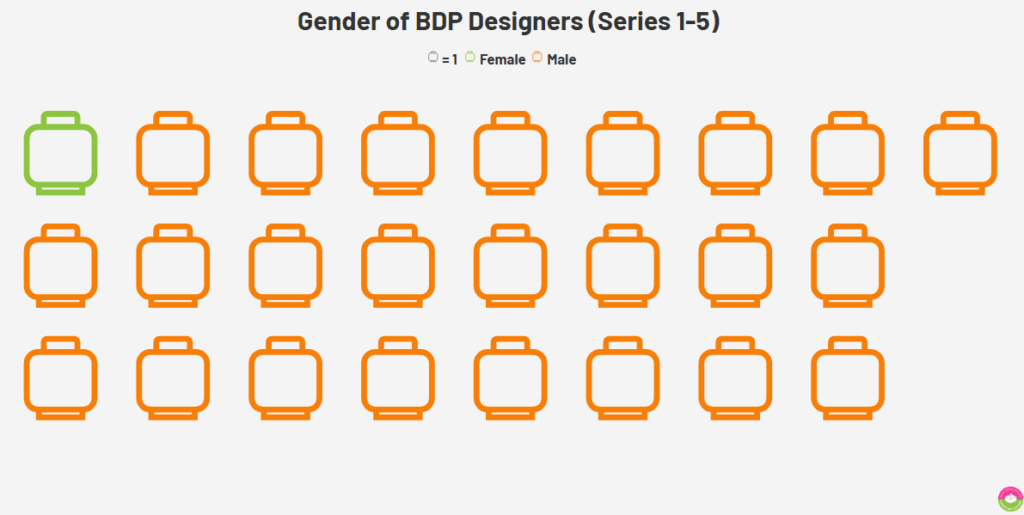
A Look Back: LEGO’s 2021 “Ready for Girls” Campaign
To give credit where it’s due, LEGO has made real attempts to confront its own biases. In October 2021, LEGO rolled out the “Ready for Girls” campaign, based on a study with the Geena Davis Institute. This was paired with an internal promise to remove gender stereotypes from products and marketing.
But while the campaign made waves in the press, its immediate impact was disappointing. The messaging unintentionally implies that girls hadn’t been “ready” before, and LEGO declined to confirm whether toy designs or marketing would actually change. The timing also raised questions: the campaign coincided with a broader societal push for gender-neutral toys, including California’s 2021 law requiring large retailers to introduce gender-neutral toy sections by 2024.
The result? A campaign that acknowledged decades of harm, but didn’t deliver tangible solutions.
Enter She Built That
Given this history, I, like many, was skeptical when She Built That launched in June. My first questions included:
- What’s the real purpose here?
- Who benefits? Girls, women, or LEGO’s brand image?
- Is this authentic inclusion or just another ad campaign dressed up as activism?
Below is a closer look at each component of the campaign.
She Built That Track
The campaign debuted with a reimagined version of RUN DMC’s “It’s Like That.” On paper, it’s an energetic girl-power anthem featuring a global crew of young talents, plus cameos from LEGO content creators Danibobstudios and Emmasaurus.
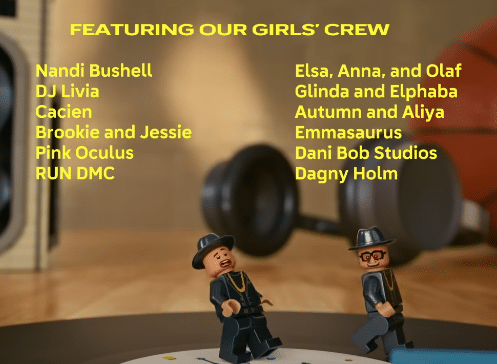
But the execution missed the mark. Despite the talent behind it, the video only drew about 31 TikTok posts using the track and under a million YouTube views. Audiences were left scratching their heads: What was the point? How does this break gender stereotypes?

Instead of leaning on nostalgia or brand synergy (RUN DMC + Adidas), the video could have spotlighted female MOC creators or LEGO designers by directly connecting the campaign to the act of building. As it stands, it felt like colorful gloss over a much deeper problem.
Brick Plaques
This may be the strongest part of the campaign: LEGO honored women who helped shape London landmarks with brick-built plaques reading “She Built That.” Examples included Waterloo Bridge (65% women workforce) and the London Eye (co-designed by Julia Barfield).

It’s a clever nod to the city’s tradition of blue plaques. But why stop at London? Why not scale this globally or highlight female LEGO builders and designers alongside architects and engineers? Recognition shouldn’t be seasonal or regional. It should be built into LEGO’s daily culture.
She Built That Page: Marketing, Games, and Workshops
Recommended Sets
This is where things get frustrating. The campaign’s official page “handpicked sets especially for girls,” dividing them into categories like Storytelling, Fantasy Seekers, and Nature and Animal Lovers. Unsurprisingly, most were Friends, Disney, or Botanicals sets.

Noticeably missing: Technic, Marvel, Medieval, or vehicle sets. In other words, the same old stereotypes are repackaged. LEGO may say Friends isn’t “just for girls,” but actions speak louder than words. When the “recommended for you” section limits creativity, it risks reinforcing the very problem it’s meant to fix.
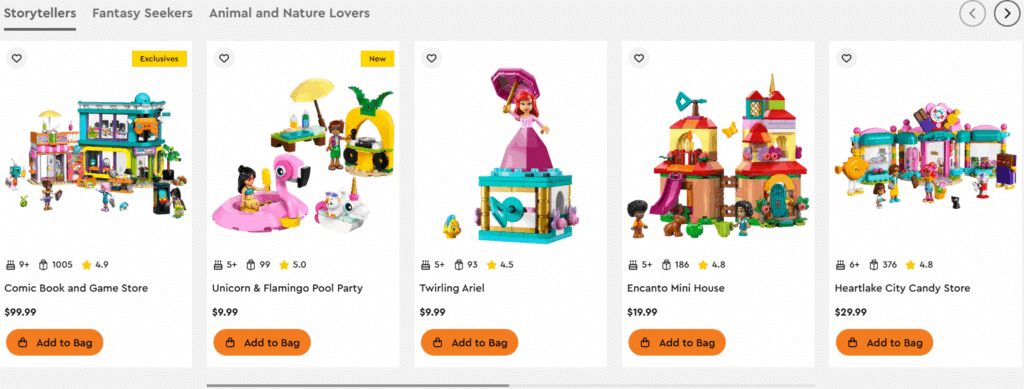
Browser Game
The game lets kids design minidoll avatars and produce their own version of the campaign’s music video. It’s lighthearted and fun, but again it pushes Friends branding front and center. How does remixing a music video help dismantle building stereotypes?
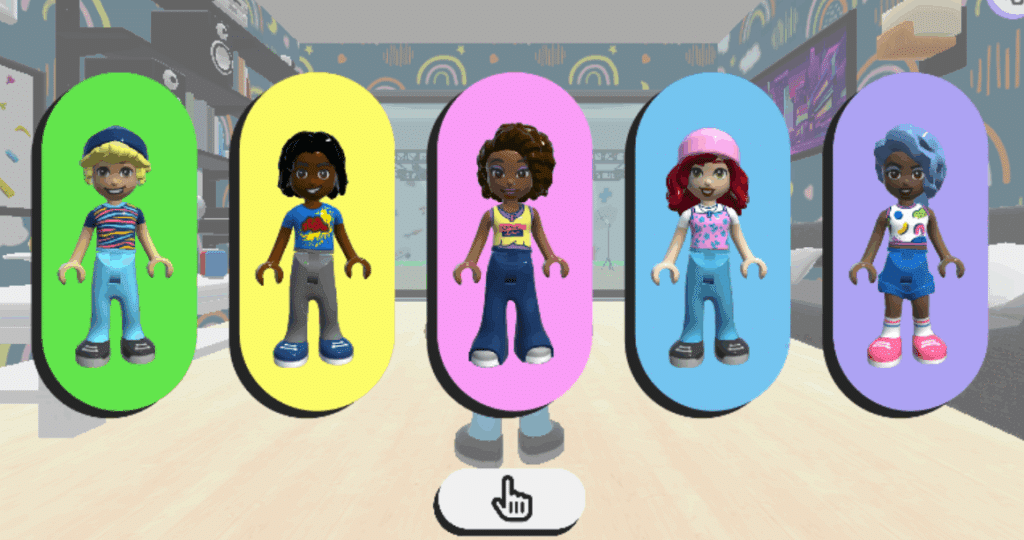
Creativity Workshops & “Watch What She Built!”
On the positive side, the creativity workshops and video content shine brighter. Workshops hosted by personalities like Astro Alexander and Nadine Coyle promote imaginative builds around themed challenges. The “Watch What She Built!” section encourages kids to try stop-motion, jewelry-making, and minifigure customization. These activities bring the focus back to what matters: building, creating, and experimenting.
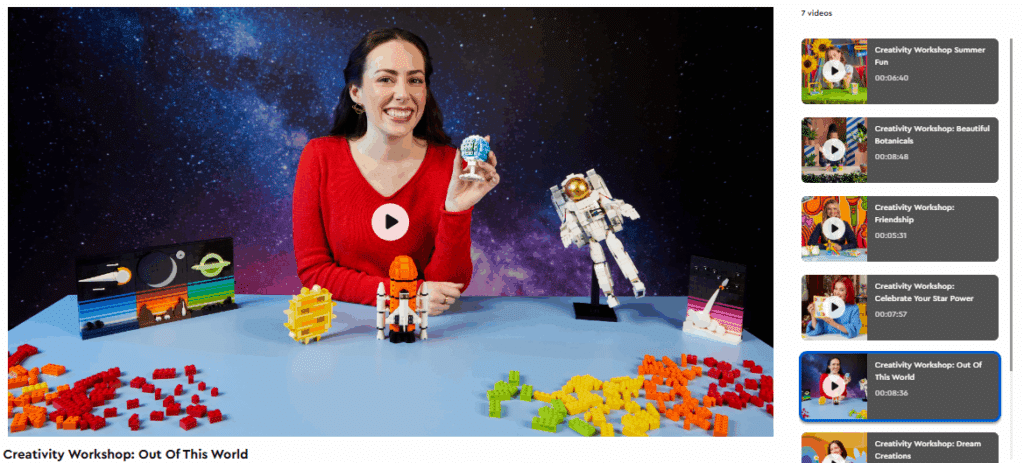
TIME Girls of the Year List
Most recently, LEGO recognized 10 young female leaders worldwide, from an Olympic medalist to an anti-bullying activist. Each honoree was represented as a LEGO minifigure, reinforcing the idea that leadership and innovation aren’t bound by gender or age.

This installment gave the campaign fresh credibility and a needed push in the right direction.
Conclusion
A recent LEGO study revealed that 70% of young women globally don’t see themselves as “good at building.” That’s not just a public perception problem but it extends to LEGO as it’s a reflection of decades of systemic messaging, from product design to advertising.
She Built That is a bold step, but its success will depend on how much further LEGO is willing to go.
If LEGO truly wants to empower builders of all genders, here’s what needs to happen:
- Break stereotypes in set recommendations: Don’t just push Friends and Disney sets, instead spotlight Technic, vehicles, architecture, and beyond.
- Expand global recognition: Celebrate female designers, engineers, and MOC creators year-round, not just in one city or campaign.
- Double down on customization: Encourage creativity by diversifying minifig parts and body representation, not limiting them.
- Prioritize authenticity: Move beyond surface-level marketing toward real changes in design, outreach, and storytelling.
LEGO’s new campaign is a good start, but let’s be clear: empowerment isn’t a limited-edition set. If LEGO wants every kid to believe they’re a builder, it needs to rewire the system, one stereotype, one ad, and one minifigure at a time.
